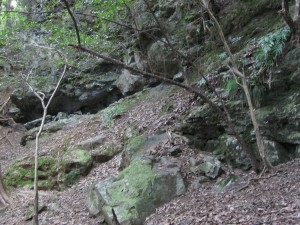
Rocks....
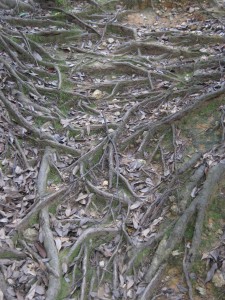
and roots
All hail to Emperor Kammu! When he founded Heian-kyo (Kyoto) in 794, he took note of the surrounding hills. ‘The mountains and rivers are the collar and belt of this area, and make it a natural fortress,’ he observed.
Some of the surrounding hills held sacred sites, where the tutelary kami of existing clans had been worshipped from prehistoric times. One such was Mt Miwa on the western fringe, where the immigrant Hata tribe had settled in the fourth or fifth century. The sacred rock on the hill was the focus of their clan rites, just as Omiwa was for the Yamato clan. Only much later, in 701, did they build Matsuo Taisha at the foot of the mount.
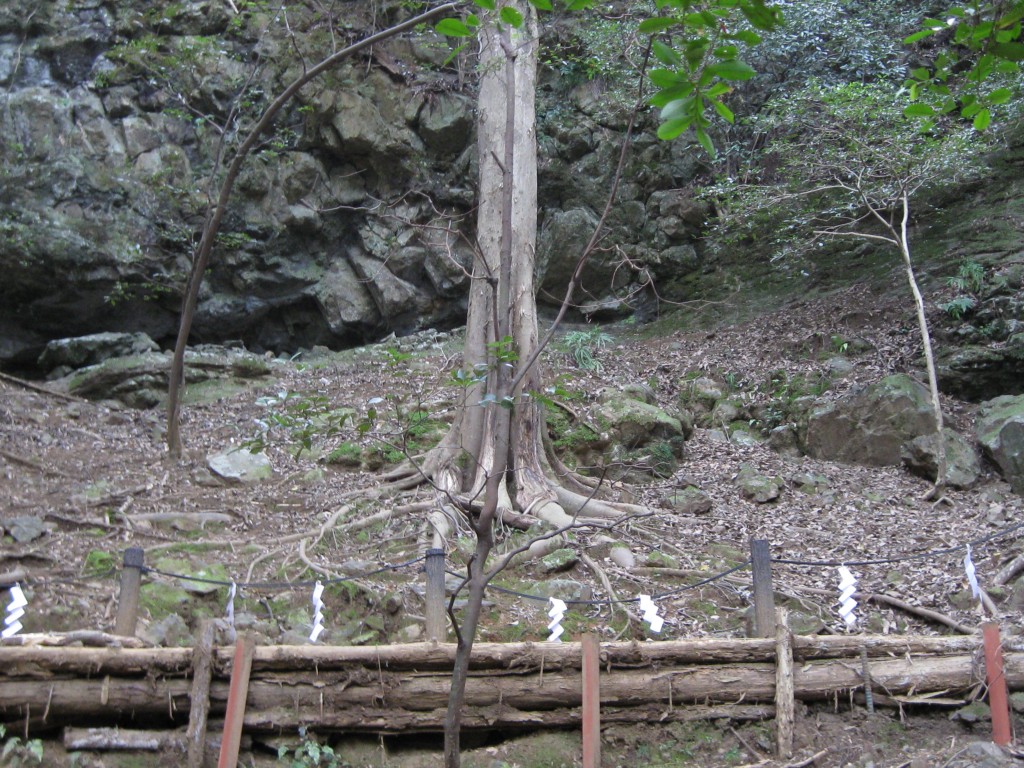
Mt Matsuo's sacred rock
From rock to shrine is the general pattern of Shinto development. Personally, I’m a rock fan. Roots and rocks are the raw essence of Shinto, and getting back to basics is what it’s all about. On Mt Miwa there’s a real sense of journeying back to the source.
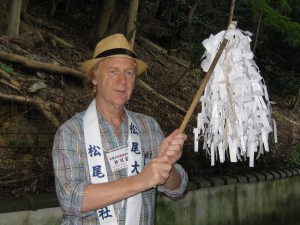
Self-purification before the pilgrim's progress
The hill isn’t well-known or well-worn, no doubt because it costs Y1000 for the 30 minute ascent. For this you get the soul-warming attire of a pilgrim’s sash. Also your name, address and tel. no. are recorded, in addition to which you get a detailed map as if you’re on a dangerous mountain hike. It seems that some folk wander off into the woods and join forever the realm of the kami.
The ascent is through the kind of attractive woods that make walking in Japanese hills a sensory delight. Snarled old branches; twisted roots; the trickling of mountain fresh streams. Two or three strategically placed torii frame magical openings. Haiku about the spirit of place are pinned on trees.
The evening clouds
bring deepening darkness:
Ah, Mt Matsuo!
– Fujiwara Korekata
One part of the track leads to the source of the stream that provides the clear water for which Matsuo Shrine is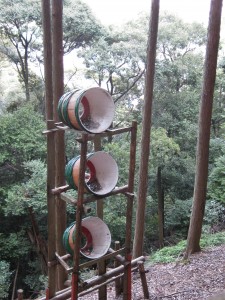 famous (it’s known for its saké connections). Another part of the track leads past oddly shaped objects and a spectacular view over Kyoto basin. What on earth are those objects? Or are they objets….?
famous (it’s known for its saké connections). Another part of the track leads past oddly shaped objects and a spectacular view over Kyoto basin. What on earth are those objects? Or are they objets….?
It turns out they’re bottomless saké buckets for throwing clay tiles through. The idea is that the tiles carry your innermost hopes with them. Should they fly through the holes, your wish will come true. You get a pack of five for Y200. I’m expecting good news about two of my wishes soon!
At the top of the hill stands a looming, atmospheric rock, or clump of rocks. It’s big, mighty, and craggy. You know as soon as it appears that this is the sacred rock, for it has an unmistakable sense of presence. Stood at the shimenawa rope before it, you can’t help but be drawn back to the fourth century and a time of shamanic possession when in the dark of the woods the spirit force was summoned to take possession.
Later, back at the shrine, an eighty-year old guide in the museum pointed out in a photograph that the kami could be seen in the rock face, in the form of their eyes, nose and mouth.
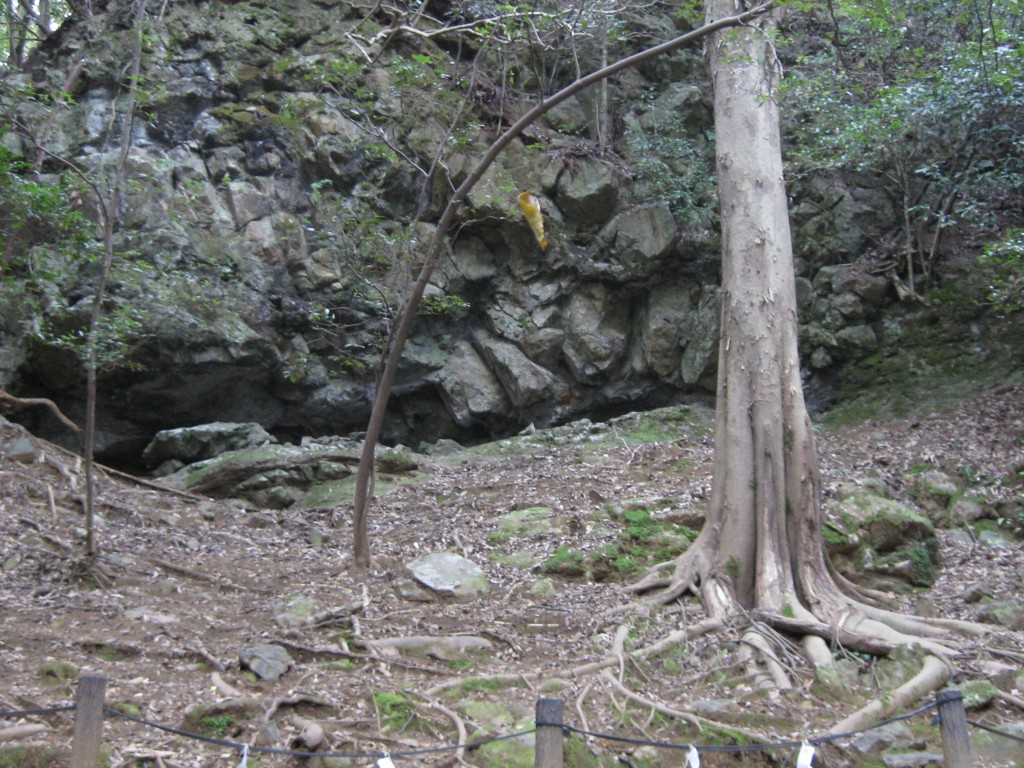
If you look hard enough, you can see faces in the sacred rock
I’ve been sixteen years in Kyoto, but this is the first time for me to visit Mt. Matsuo. It won’t be the last. This little climb transports one in a matter of minutes to another world from that of the concrete waste below. Taken overall, you could say in fact that Mt Matsuo truly rocks!
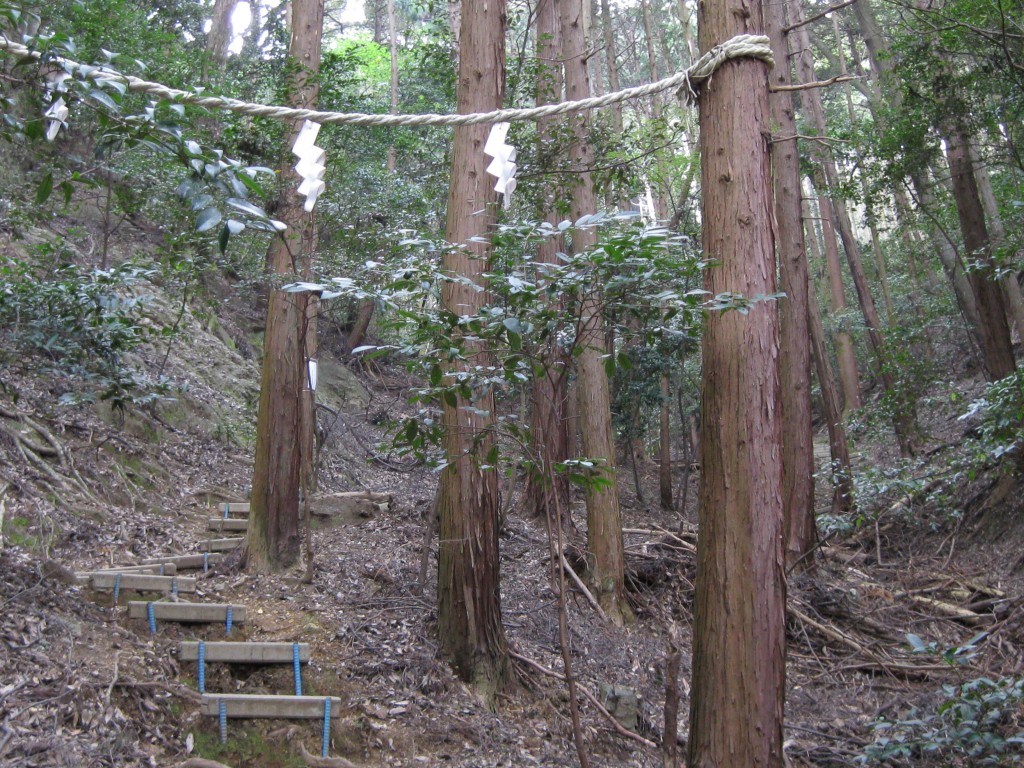
Ascending Mt Matsuo
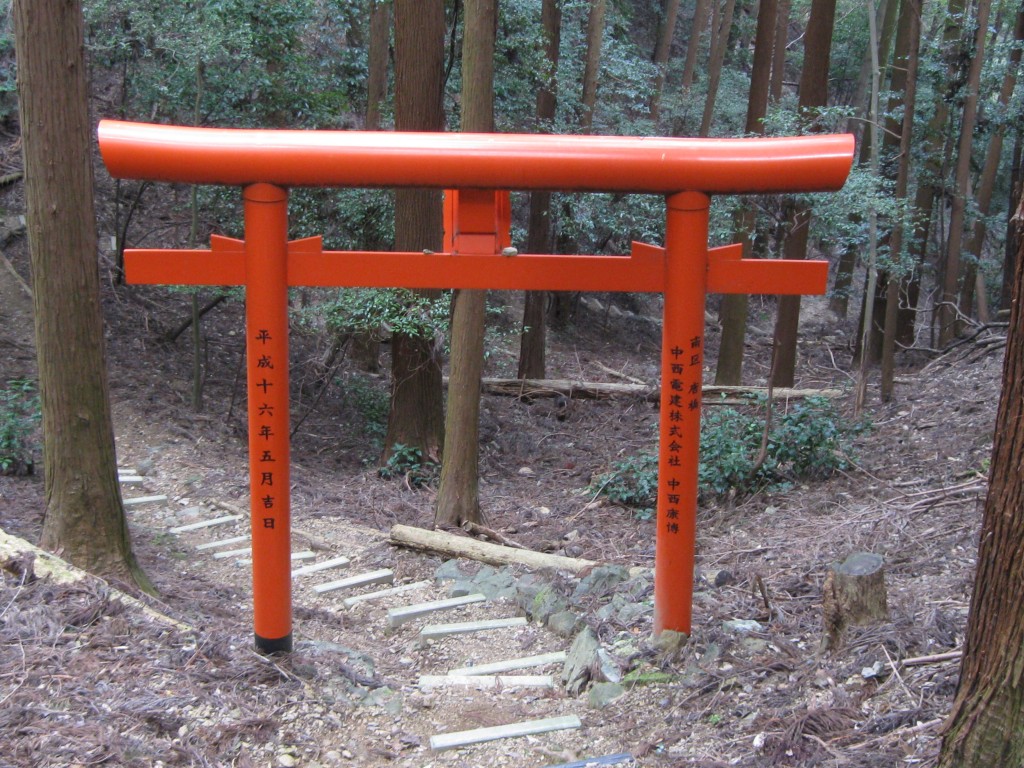
The way back home

Leave a Reply